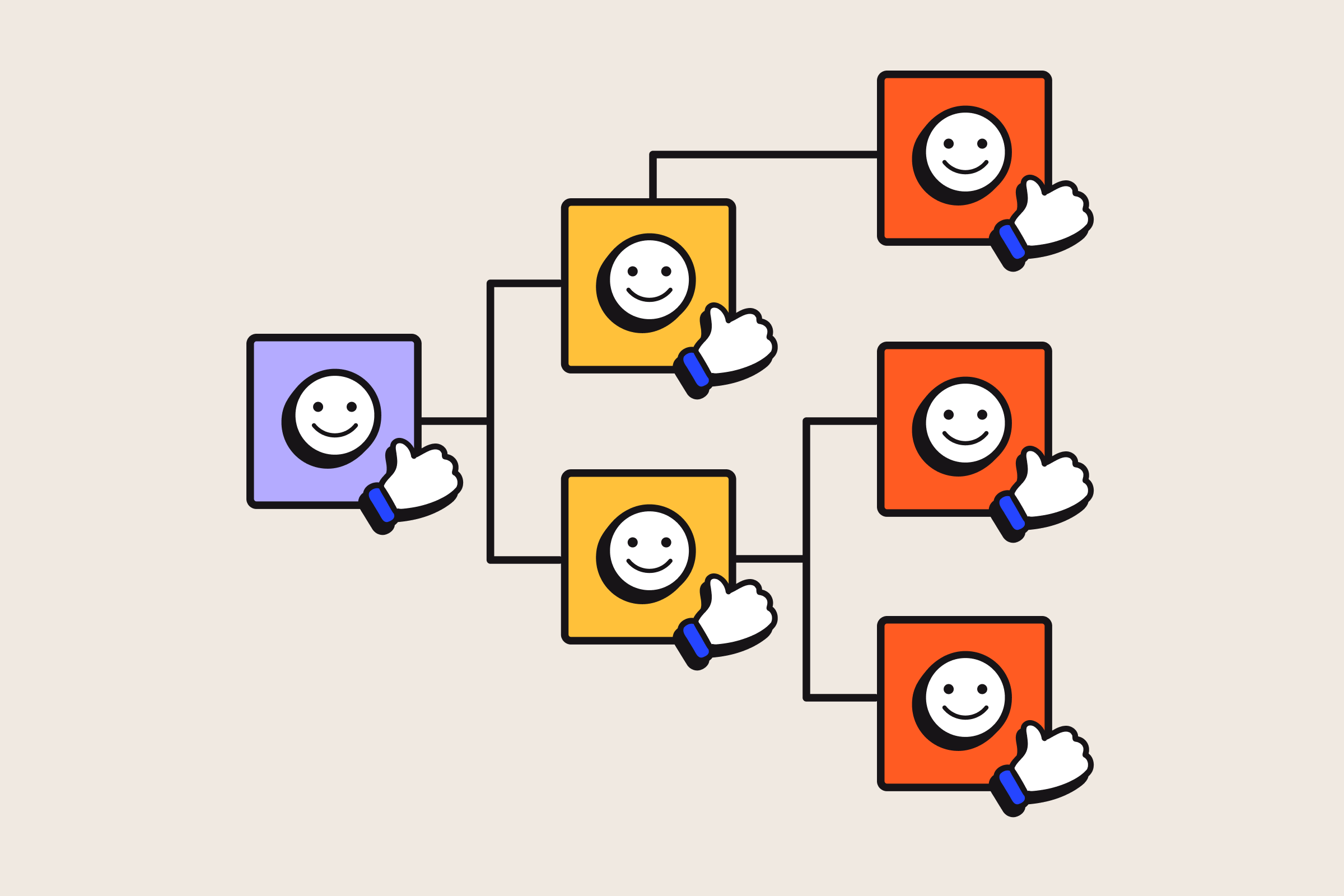How to motivate employees + 3 warning signs of disengagement

Discover Workleap Officevibe's latest benchmark report on 12 key employee engagement metrics

Organizations can’t reach their goals without a knockout team to help them do it. That’s why many recruiters and HR teams invest serious time and money into bringing the right people on board.
But the work doesn’t stop there. High turnover drains morale and racks up costs, which means once you build a strong team, you need to hold onto them. And one of the best ways to do that is by keeping your people genuinely motivated.
Not sure how to motivate employees effectively? We’ll break down what actually fuels motivation and how to tell when your approach is falling flat.
What’s employee motivation, and why is it important?
Employee motivation is the drive that keeps a workforce engaged and pushes them to do their best work. Motivated employees take initiative and bring energy to everything they do. It’s the difference between teams that just get by and those that move the business forward.
Motivation can come from internal or external sources. Internal (or intrinsic) motivation stems from personal satisfaction, like a sense of purpose or pride in doing great work. External (or extrinsic) motivation includes tangible rewards like bonuses and intangible ones like praise or public recognition.
Both types of motivators matter. Companies that know how to tap into each can boost performance, improve retention, and build teams that consistently deliver results.
The impact is hard to ignore. Gallup research shows that engaged employees are:
- 14-18% more productive
- Responsible for 23% higher profitability
- More likely to report high levels of well-being
- 78% less likely to miss a day of work
- Involved in fewer workplace accidents
- 21-51% less likely to leave the company
- Known to produce higher-quality work
The bottom line? When you encourage employee motivation, you create a more productive, engaged workforce — a workforce that stays longer, contributes more, and helps your organization thrive.
The key drivers of employee motivation
It’s one thing to say that intrinsic and extrinsic motivation fuel employee success. But what does that actually look like day to day? Most sources of employee motivation fall into three main categories, all of which play a critical role in building a committed, high-performing workforce.
Recognition
Recognition is one of the most powerful (and most overlooked) tools for motivating employees. It’s low-cost, high-impact, and deeply human. But in one Gallup analysis, only one in three respondents reported receiving praise within the past week.
That gap matters. Employees who don’t feel recognized are twice as likely to leave their jobs. When done right, recognition encourages people to keep showing up and giving their best.
The key is to make recognition meaningful. Praise lands best when it’s specific, heartfelt, and tied to a clear accomplishment. Peer-to-peer praise is important too, but feedback from a manager or senior leader often carries more weight.
Compensation
It’s no secret that compensation is a big source of motivation for workers. Even people who love their jobs rely on them to support their lives. When pay is fair and allows employees to meet their needs, the result is loyalty and trust.
Compensation doesn’t just put money in people’s pockets. It sends a message. A strong package signals that employees are valued and their work matters. And that sense of being seen and appreciated fuels motivation.
Studies also link fair compensation to higher performance. So while competitive pay might cost your organization more today, it often leads to a healthier bottom line over time.
Workplace culture
Workplace culture plays a major role in employee motivation. People are more likely to show up and care about results when their work environment supports them.
In a strong company culture, people feel trusted and connected. They’re given the autonomy to do their work in the way that suits them best. When they do well, they receive both praise and material incentives. Professional development opportunities are there for anyone who wants them, and employees take pride in gaining new skills.
Perhaps most importantly, a positive workplace culture means employees never work in fear. They feel safe speaking up, sharing feedback, and being themselves without worrying about backlash. This kind of environment strengthens engagement and helps employees do their best work.
Unengaged vs. disengaged behaviors and how to spot them
Unengaged or disengaged employees are often the first signs that something’s off with your motivation strategy. Here’s what you need to know about both traits and how to identify them.
Unengaged employees
Unengaged employees were never truly connected to their work in the first place. They may have missed the onboarding spark or just never felt aligned with the company’s mission or values. Without that initial sense of purpose or belonging, people are more likely to check out early (or quickly jump ship).
Disengaged employees
Disengaged employees started out engaged but lost momentum over time. They may have once cared deeply about their role but no longer feel energized, recognized, or aligned. The good news? Disengagement can often be reversed. With the right motivational techniques, you can help these employees re-engage and start thriving again.
Signs of employee disengagement
If employees are showing signs of disengagement, it’s time to revamp your motivation strategy. It’s easier to course-correct early if you keep an eye out for these disengaged employee behaviors.
Burnout
Disengagement and burnout often go hand in hand. Tired, overworked team members become resentful and lack the energy to complete their tasks. Instead of finding validation at work, they associate their job with stress. Burnout can manifest in several ways, from rudeness or irritability to visible signs of exhaustion.
Lack of communication
Employees who aren’t engaged at work tend to communicate poorly. They might be passive in meetings, slow to respond to messages, or less polite when they do engage. Over time, they may also start pulling away socially, skipping optional calls or avoiding team activities and events.
Drop in quality
Motivation has a direct impact on output. Disengaged workers often miss deadlines, cut corners, or show up late. Effort declines across the board, from the work itself to how they interact with the team.
6 ways to motivate employees at work
Motivated workers power business success, so it’s worth taking a strategic approach to motivation. These seven strategies are practical, proven ways to spark engagement and bring out the best in your workforce.
1. Regular recognition
Praise doesn’t have to wait for big wins. Motivate employees by making recognition a daily habit. Call out progress on a new skill, a thoughtful comment in a meeting, or a tough workload handled with grace. And celebrate milestones like work anniversaries, making sure every shoutout is specific and sincere.
2. Empower growth
Professional development drives motivation and loyalty. When employees build new skills, they’re more confident and empowered. You can help them along by offering learning opportunities, covering the cost of courses, and encouraging career growth. Your employees will advance in their careers while the organization grows a stronger, more capable team.
3. Encourage autonomy
Micromanagement is a motivation killer. But you can avoid it by trusting team members to take ownership of their work. Give employees room to make decisions and organize their days. And while flexibility doesn’t work for every role, letting people choose when and where they work can boost motivation, accountability, and pride.
4. Foster a fun workplace
Employees who have fun at work tend to be more engaged and productive. Plan team-building events, celebrate birthdays and milestones, and gamify goals with meaningful rewards, like extra time off or a nice meal.
5. Establish a culture of work-life balance
A good work-life balance prevents burnout and improves the employee experience, so don’t glorify overworking. Instead, encourage time off and honor personal needs to create a culture where balance is the norm. Flexibility and trust go a long way toward a healthier, happier workforce.
6. Use transparent communication
Strong communication builds trust, and trust fuels motivation. Keep employees in the loop, explain the “why” behind decisions, and invite feedback. When people feel heard and well-informed, they’re more connected and committed.
Motivate employees the smart way with Workleap
Motivating a team requires more than good intentions. You need the right insights and tools to turn feedback into meaningful action.
With Workleap Officevibe, you can measure employee engagement, run anonymous pulse surveys, collect real-time feedback about the team’s experience, and recognize wins as they happen. And Workleap Performance lets you gather the right performance feedback, from all angles, so you can set clear goals and track progress. Together, these tools will help you spot early signs of disengagement and build a workforce that stays motivated and on track.
Try Workleap for free today, or request a demo to see our tools in action.
Equip HR and managers with tools to engage, recognize, and drive performance.















